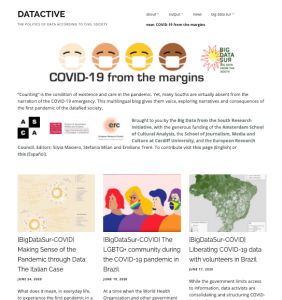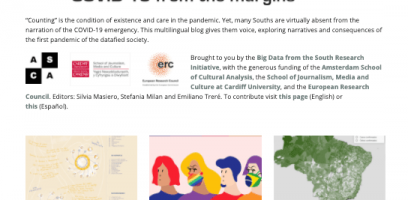The COVID-19 pandemic has been the first data-informed event in history. It has brought the need for reliable datasets to understand the virus:
- On the progress of the pandemic.
- Between mortality and lethality.
- On how many infected people, and how many that have been cured.
- But also forecast models and R0 index.
Knowing that was essential to tracking the virus’ spread and virulence. While this sounds simple, in reality COVID-19 exposed deep and pervasive “gaps” in counting.
What is a data bias and what are its consequences
The common definition of data bias is that the available data is not representative of the population or phenomenon of study. As mentioned in my previous blog post, data isn’t abstract. Rather, it has a direct impact on people’s lives. This means that big datasets can lead to discriminatory and harmful perceptions. That is, unless we make sure that these datasets include everyone.
As Prabhakar Krishnamurthy explains, these two cases also exist:
- Data does not include variables that appropriately represent the phenomenon we want to predict.
- Data includes human-produced content that may contain bias against certain groups of people.
When you have a certain set of data, you exclude others. So, we have to ask ourselves a few questions. Has everyone’s information been collected? Who is being excluded? What can you do to have a more comprehensive view of reality? Do not think that “data-driven” is neutral.
“Counterdata” to change perspective
Instead, we should embrace an innovative approach to data. The type of approach that forces us to reflect on other themes. This helps us rely on different data that is outside the dominant narrative.
D’Ignazio and Klein, suggest one easy and accessible way to do that. That is, the collection of those data the authors define counterdata.
Counterdata is the type of data that offers an alternative view to the officially collected data. For example, by counting what is not otherwise included into institutional statistics.
If you want to start a data collection project following this new rules, you can scroll through the list published by The Library of Missing Datasets. It is a list of all the datasets that should exist. They are important because they are relevant to the most vulnerable communities and people. People who often do not exist in datasets.
There are missing datasets for different reasons. Maybe the necessary investment to collect them does not fit a cost-benefit analysis. Or, maybe they are data missing on purpose, because those in power are interested in keeping them hidden.
Making migrants visible
One of the best projects with a intersectional approach to pandemic data is the blog “COVID from the margins.” This is a project coordinated by the Big Data from the South Research Initiative.
“Counting” is the condition of existence and care in the pandemic. Yet, many Souths are virtually absent from the narration of the COVID-19 emergency. This multilingual blog gives them voice, exploring narratives and consequences of the first pandemic of the datafied society.
The blog hosts a series of contributions telling the impact of the spread of the virus. It focuses on marginalized communities, or on the dynamics of power and oppression activated by the virus.

Screenshot from the homepage
Annalisa Pelizza and Yoren Lausberg reflect about the relationship between data and invisible populations. On the one hand, there seems to be a trend trend towards making migrant populations more visible. On the other hand, this would mean facing the fears of repression and deportation. In addition to other fears vulnerable populations live with.
Tracking apps could be used to take advantage of the personal information disclosed to identify and track undocumented migrants.
How can be visibility just?
Journalists suggest an effective approach to address the problem of making the invisible population of migrants countable under fair conditions:
- Giving careful consideration to how we count and what digital infrastructure we use
- Access to civil rights for these people must also include the right to be deleted from any database. This includes the right not be traced beyond the original goals
- An alliance between different counting entities rallying around the need for public critical care (including migrant-led organizations, shelters, health care institutions, unions)
- The counting should take into consideration the European migration regime.
But, what do you think?
Please leave a comment if you can think of ways to make people visible through data. I’m really curious to know what you think about this reflection!
Have a great day people.


